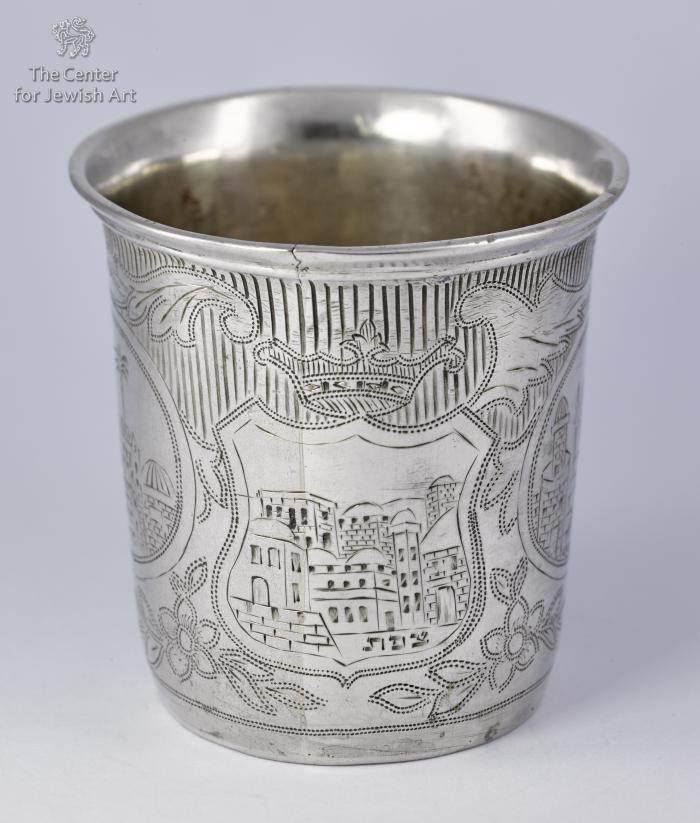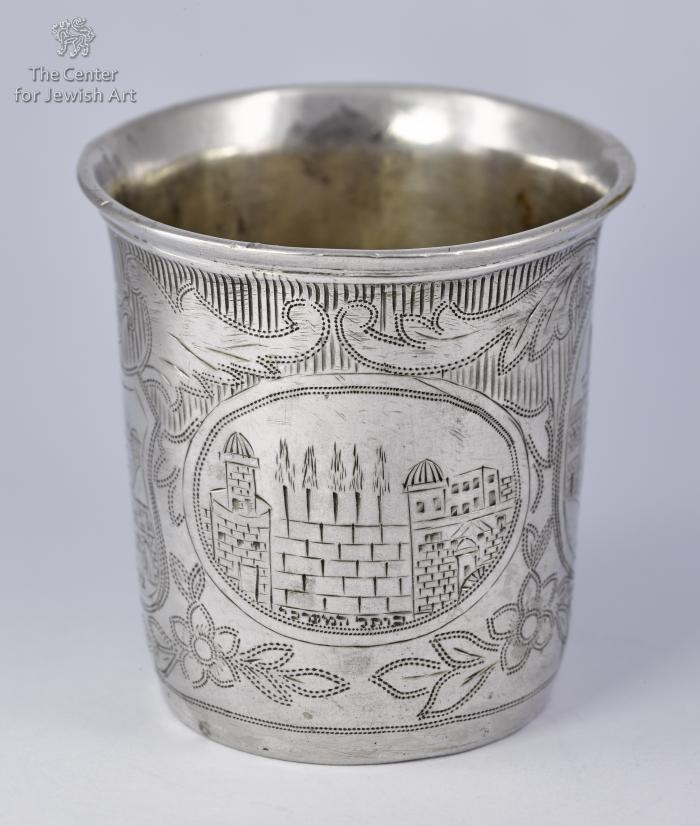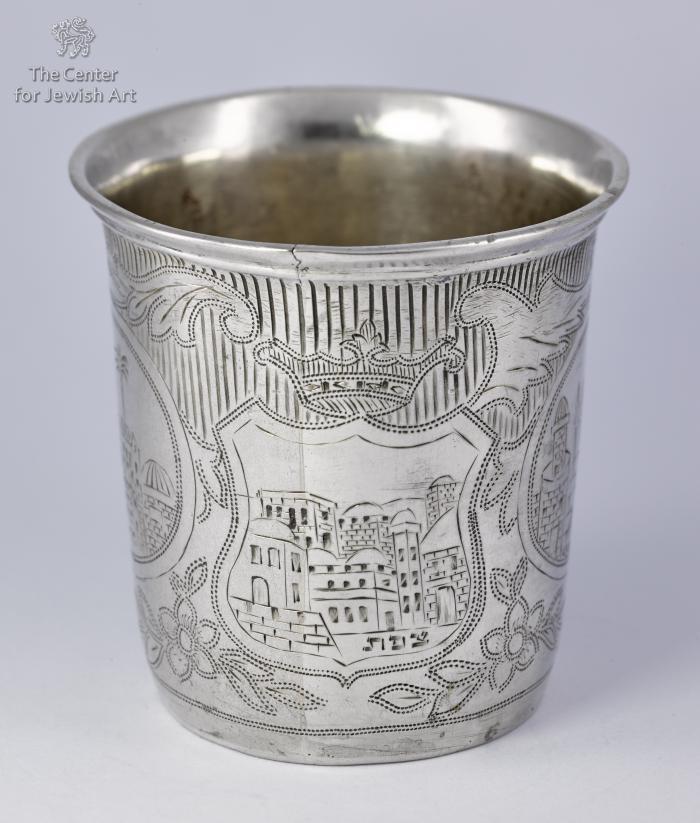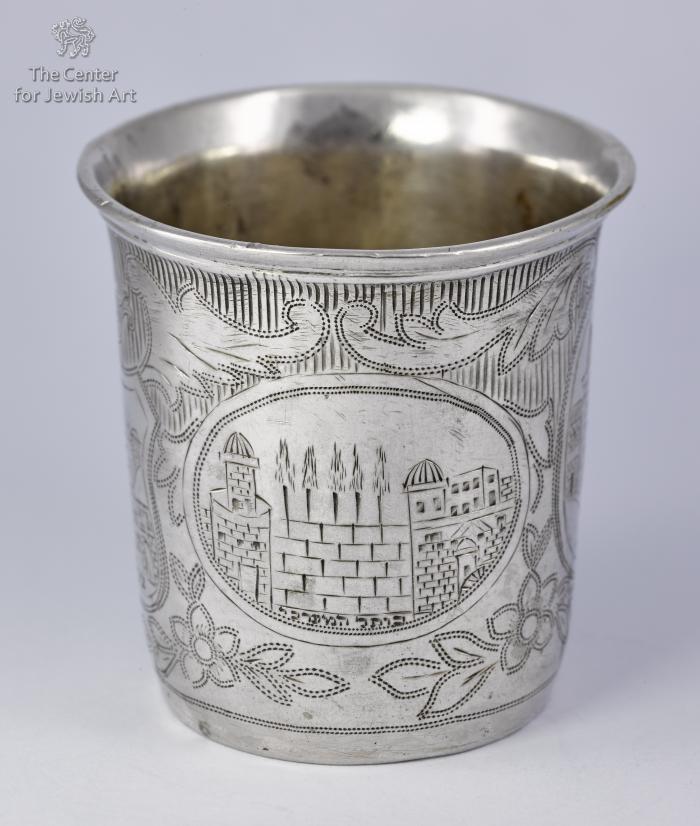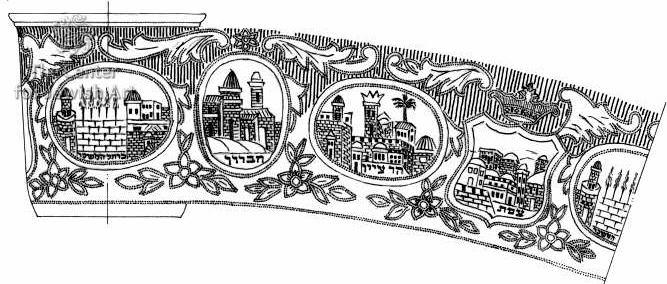Obj. ID: 23618 Kiddush cup, Safed, circa 1885
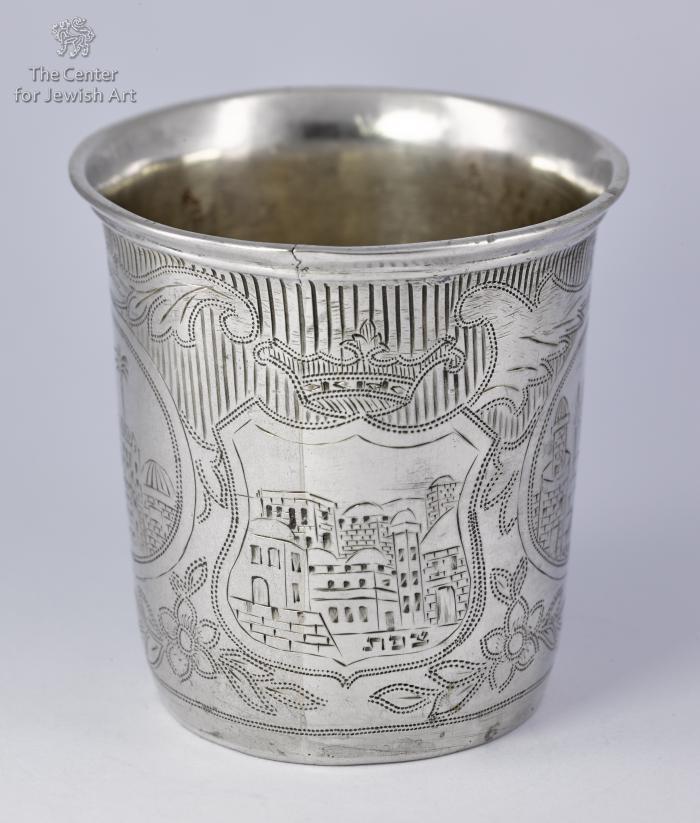
sub-set tree:
The following description was prepared by William Gross:
The sanctification of the Shabbat and Holidays is connected with a blessing recited over wine or grape juice. While the wine can be drunck from any vessel, often special cups are created for the purpose. In most cases, regular cups are simply decorated or inscribed with names or blessings, rendering them exclusively for the Kiddush.
This so-called "Zfat Cup" is a well known and popular item of Judaica. Most of these cups were brought without decoration from Europe, as indicated by the silver hallmarks, and were engraved in Eretz Israel with vignettes of Holy sites. The common knowledge is that such cups were fashioned the the city of Safed and hence their common name. The earliest dated cup is from 1881, so it is probable that they were made in the last quarter of the 19th century and the first quarter of the 20th. A number of existing examples have personal dedications, but it seems that they were purchased as souvenirs of the Holy Land as well.
This cup seems to be one of the earlier examples, both because of decoration and scenes that resemble early examples and because of the fineness and delicacy of the engraving. The Holy sites engraved are images of the Kotel, the city of Safed, The Tomb of the Patriarchs in Hebron, and Mount Zion. Inscription: Safed; Hebron; The Western Wall; Mt. Zion



